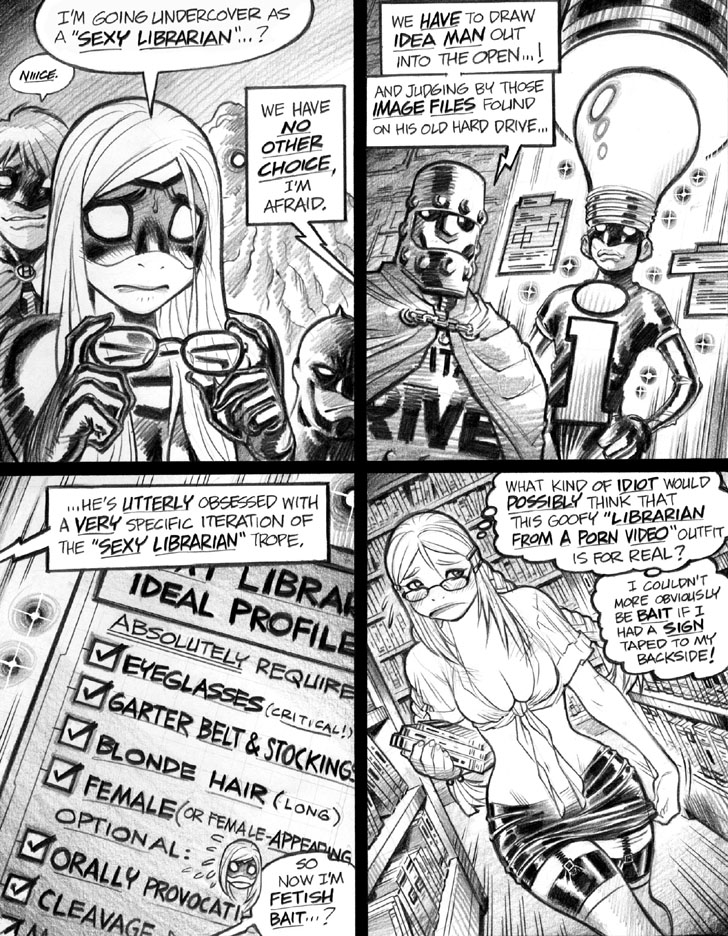Panel 2: Yeahp, this supervillain rocking the ungainly, lightbulb-shaped headpiece indeed calls himself “Idea Man.” Not the most exciting, humorous or notable supranym one would hope for, but I didn’t feel like replacing it with a better alternative. As I’ve said before, working on Empowered is all about embracing imperfection, and making “improvements” to existing work would very much be at odds with such an approach—though, it should be said, I have no compunctions about making the occasional correction, whether that means fixing a typo that made it past several rounds of proofreading or a shifting a character’s unacceptably wandering hand. (I’m looking at you, future Ocelotina in the previous story.)
Panel 4: A somewhat rare use of thought balloons in this panel, which is a storytelling trope that I don’t use all that often in Empowered—as opposed, though, to most of my other work, in which thought balloons almost never appear.
I should note that thought balloons have been out of fashion in North American comics writing for decades now. I never really used them all that often to begin with, as I generally preferred the use of narrative captions, as in comics projects like Bubblegum Crisis: Grand Mal, Iron Man: Hypervelocity and Galacta: Daughter of Galactus. Interestingly, the English translation of one manga in particular made me rethink my antipathy towards thought balloons: Maison Ikkoku, in which the great Rumiko Takahashi brilliantly used ’em to highlight the often stark differences between what Kyoko and Godai were saying to each other and what they were really thinking. In the end, I didn’t wind up actually using thought balloons any more often in my work, but Takahashi’s adept usage of the trope at least made me appreciate the narrative idiom a bit more.
I also wonder if I’m bothered less by ’em in Japanese comics because manga thought balloons are usually depicted as fairly conventional-looking word balloons with only a distinct “bubble tail” to indicate the “thought” mode. By contrast, American comics use a more explicitly cartoony, “bubbly” balloon shape overall, as seen in panel 4 above, which lends itself a bit of an old-style, unfashionably “retro” flavor, perhaps. Plus, I should note further that manga use a wider and more flexible, balloon-free approach to depicting character’s thoughts, from the “burst effect” of radiating lines used to “halo” a shocking insight to the quieter, more contemplative approach of white type appearing within an all-black panel to indicate an internal monologue. To be honest, I’m not sure why I haven’t bothered to rip off these manga narrative tropes more often…
-Adam Warren

